On the lookout for the very best cameras that you can purchase right now? Fear not. Our guide is here to steer you in the best direction. Whether you need a beginner-friendly DSLR, mirrorless, smartphone-beating compact, or an action camera, we are summarizing all the best choices from the world based on many reviews and tests.
Not sure where to start? There are a few aspects to remember that could help limit your options. High on the list is budget, but you will also be considering your expertise, in addition to your favorite styles of photography. No matter what you need, there’s a perfect camera out there waiting for you, and we have picked out the best for every type to assist you in finding it.
Perhaps you are just starting out and need a beginner-friendly camera that can allow you to make the jump from your smartphone. Maybe you’re a more expert photographer who wants the elite specs. Whatever stage you are at, picking the ideal camera means determining your requirements and aligning them with those found in our manual.
To help you choose, we have thought about size, cost, and features to gather a listing of the best cameras from every category, such as stills-focused pro cameras, in addition to those better suited to vlogging. Each camera on the next list provides the goods somehow — if it is the finest in its class, a fantastic all-round bundle, or an outstandingly good price.
On the lookout for the greatest versatile all-rounder? At this time, our top pick is the Fujifilm X-T4. It’s the ideal hybrid camera you can purchase right now and is as comfortable shooting a movie as it stills.
Nevertheless, it may not be the ideal model for you, so make sure that you scroll through our complete guide to get the best match for your shooting needs — every entry in this list is a tried-and-tested unit, so all you will need to do is decide what’s the best fit for your budget and photographic design.
The best cameras in 2020:
1. Fujifilm X-T4
Price: $1,699
The best all-round camera you can purchase

Resolution: 26.1MP | Sensor Size: APS-C | Viewfinder: 3,690K dots | Autofocus: 425-point AF |Monitor: 3.0-inch tilt-angle touchscreen, 1,620K dots | Films: 4K at 60p | User level: Intermediate |Maximum continuous shooting speed: 15fps (mechanical shutter), 30fps (digital )
On the lookout for a hybrid camera that is just as able to capture video as it is stills? The X-T4 is the best choice around. It’s the best APS-C camera we have ever reviewed and built on the Fujifilm X-T3’s impressive base by incorporating faster burst shooting, in-body picture stabilization (IBIS), a few successful design tweaks. Adding to its all-rounder abilities is a larger battery (which keeps it working for 500 shots per charge) and improved autofocus, which is reliable and fast in many scenarios. Its 26MP APS-C sensor stays leading for stills, though the X-T4’s real strength is its own functionality as a movie camera.
The IBIS is a big bonus here, and the X-T4 backs that up with an enormous selection of tools and a great shooting experience, including a fully articulating touchscreen. It may cost the same as many full-frame cameras, but the X-T4 and its fine variety of X-series lenses create a great, smaller option for those seeking a mirrorless all-rounder.
Pros
- Superb image quality
- IBIS a big bonus for video
Cons
- No headphone jack
- Video recording limit
2. Nikon Z50
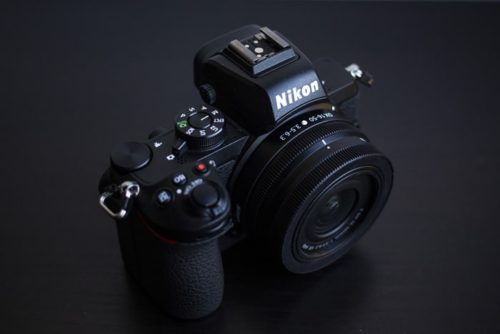
Price: $1,096
The perfect mid-range mirrorless update for DSLR owners
Form: Mirrorless | Sensor Size: APS-C | Resolution: 20.9MP | Lens: Z-mount |Viewfinder: EVF | Maximum continuous shooting speed: 11fps | Display type: 3.2-inch tilting touchscreen, 1,036,080 dots | Films: 4K | User level: Enthusiast
On the lookout for a smaller, less expensive version of the full-frame Nikon Z6 for general shooting and travel? The Z50 meets the bill and is an outstanding entry to midsize, APS-C cameras from Nikon. It’s particularly appropriate for those seeking to switch to mirrorless by a Nikon DSLR. Unlike more miniature rivals such as the Fujifilm X-T30, it prefers handling due to its large, deep grasp.
The Z50 gives great photos and has the same fantastic autofocus system as the Nikon Z6, which works very well for static subjects, but can not match something like the Sony A6400 for sports activities. However, with a tilting touchscreen and an impressive viewfinder, the Z50 is an excellent camera for traveling and general shooting. It can be used with older F-mount lenses through an optional adaptor, with Nikon’s latest Z-Mount glass.
Pros
- Great, DSLR-style handling
- Superb viewfinder and screen
Cons
- Limited range of native lenses
- Tilt-screen can not be used with a tripod
3. Fujifilm X100V
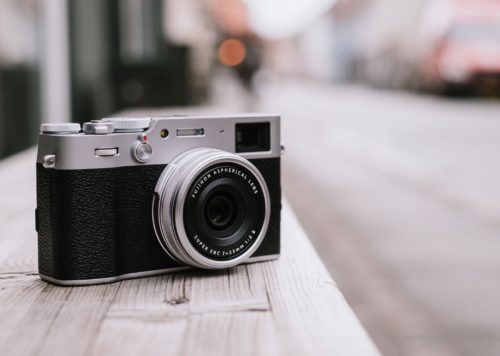
Price $1,399
An iconic compact yields, now with improved functionality
Form: Premium compact | Maximum continuous shooting speed: 11fps | Sensor: APS-C X-Trans CMOS | Resolution: 26.1MP | Lens: 23mm, f/2 | Viewfinder: Hybrid EVF | User level: Beginner/enthusiast | Display type: 3.0-inch tilt-angle touchscreen, 1.62m dots | Films: 4K |
On paper, the Fujifilm X100V should not make sense: a compact camera styled just like something from the 1950s, using a fixed 23mm f/2 lens and a premium price tag. Nevertheless, the model’s antecedents have become iconic amongst photographers — and the X100V seems set to follow suit. Timeless and understated, there is something quite special about that compact retro body.
The X100V keeps what works, just tweaking what it requires: there is now a convenient tilting touchscreen and a weather-resistant body (though you want to add a filter to the lens to receive full weather-sealing). The show’s fixed aperture lens setup has always been fantastic for road and portrait photography, and outcomes are just better today than Fujifilm’s added a new 26.1MP APS-C sensor paired with the most recent X-Processor 4. Autofocus is faster, sound control better, and picture quality enhanced. The hybrid EVF — both optical and digital — packs a higher-resolution, also.
Add a quicker, continuous shooting speed and 4K video to the mix, and you have one very desirable compact. Definitely, it’s niche and certainly not cheap, but there is nothing else quite like it.
Pros
- Tilting touchscreen
- Improved sensor and autofocus
- 4K videos
Cons
- Needs filter for full weather-sealing
- Expensive
4. Sony A6100
Price: $748
A fine mirrorless camera for beginners and amateurs alike
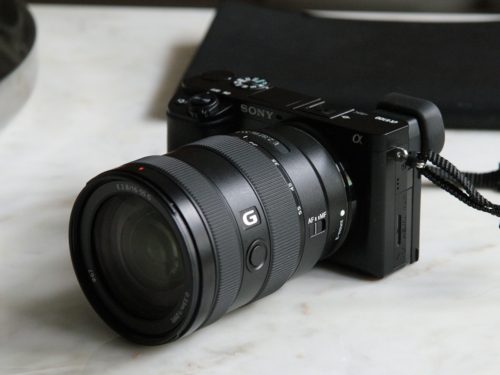
Form: Mirrorless | Sensor Size: APS-C | Resolution: 24.2MP | Lens: Sony E-mount | Viewfinder: EVF | Maximum continuous shooting speed: 11fps (mechanical) | Films: 4K | Display type: 2.95-inch tilting touchscreen, 921,600 dots | User level: Beginner
Since its Launch five decades back, the entry-level Sony A6000 has been established as a leading mirrorless camera. Its successor, the A6100, uses the existing recipe also adds several tweaks that allow it to compete with today’s mirrorless package. Compact yet competent, the A6100 pairs a beginner-friendly design with a feature set that will not disappoint the more adventuresome. It may take time to understand the camera’s potential, but there are loads of it: the APS-C sensor is the exact same 24.2MP chip found in Sony’s more superior cameras, while the autofocus system is common with the flagship Sony A6600.
The end result is excellent endless tracking abilities and, paired with a fantastic lens, images with loads of detail and generally accurate colors. Battery life is also adequate, and the tilting display is now touch-sensitive, although its performance is fairly limited. Particular performance and handling quirks are shared with its more expensive siblings — Auto ISO does not suit fast-moving subjects, for example — but these are more forgivable on an entry-level version, especially such a good all-rounder since the A6100. It deserves to be just as famous as its predecessor.
Pros
- Superb tracking autofocus
- Compact yet feature-packed
Cons
- Takes time to understand capabilities
- Relatively low-res LCD and EVF
5. Sony ZV-1
$798
The best small vlogging device for YouTubers
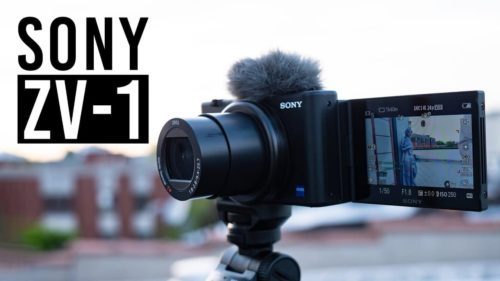
| Resolution: 20.1MP | Type: Compact | Sensor dimensions: 1-inch Lens: 24-70mm f/1.8-2.8 | Viewfinder: None | Maximum continuous shooting speed: 24fps | Screen type: 3.0-inch vari-angle touchscreen, 921,600 dots | Films: 4K/30p | User level: Beginner/Intermediate
On the lookout for a compact vlogging camera for your YouTube channel? The Sony ZV-1 is the best around. Sony has combined all the best bits out of its various RX100 series cameras and added a few handy design tweaks to create the near-perfect pocket camera for video shooters. Its best characteristic is the combination of a glowing 24-70mm f/1.8-2.8 lens with Sony’s real-time monitoring and real-time Eye AF systems — together, these make it amazingly simple to shoot high-quality vlogs with impressive background blur and unerring focus.
A 3.5mm microphone jack implies you can also find the sound quality, which matches the ZV-1’s video performance. A hot-shoe allows you to mount accessories such as a mic or light without needing additional accessories such as a bracket. Obviously, the battery life is pretty average, and the stabilization is not quite gimbal-smooth, though, in every other respect, it is the smartphone-beating camera bloggers are waiting for.
Pros
- Class-leading Autofocus
- 3.5mm mic port and Hotshoe
Cons
- Limited touchscreen
- MicroUSB rather than USB-C
6. GoPro Hero 9 Black
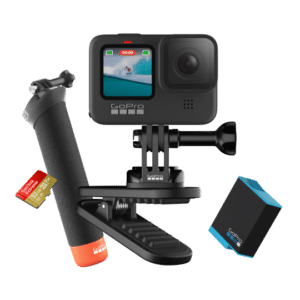
Price: $289
The most versatile action camera we have ever seen
Waterproof: 10m | Weight: 158g | 4K video: up to 60fps | 1080: up to 240fps | 720: up to 240fps | Battery: 1720mAh | Stills resolution: 20MP
If you’re on the lookout for a tough, watertight backup camera that you can stick to pretty much everywhere, then the Hero Black is the best choice around at this time. Its new front-facing LCD is a blessing for vlogging, while its 5K video mode captures more detail than any other action camera. Having said that, it’s all the Hero 9 Black’s little software tricks that actually elevate it above the DJI Osmo Action and Hero 8 Black. Its HyperSmooth stabilization currently works in almost any video resolution or frame-rate, while features like TimeWarp and HindSight (which enables you to catch what happened 15-30 minutes before you run the shutter) are truly useful creative tools.
If you don’t require the Hero 9 Black’s flexibility or front display, then the Hero 8 Black stays better value. It also currently has a somewhat unresponsive rear touchscreen that GoPro promises to fix with firmware upgrades. However, if you’re looking for a brilliant B-camera or the main camera for adventure sports, it is difficult to beat the Hero 9 Black.
Pros
- 5K video captures plenty of detail
- Front display for vlogging
- Improved battery life
- New software skills
Cons
- Rear screen a little unresponsive
- Little improvement to 4K movie
7. Olympus OM-D E-M5 Mark III

Price: $899
Among the best travel cameras, you can purchase today.
Type: Mirrorless | Resolution: 20.4MP | Sensor Size: Four Thirds | Viewfinder: 2.36M-dot OLED EVF | Lens: Micro Four Thirds | Display type: 3-inch vari-angle touchscreen, 1,040,000 dots | Maximum continuous shooting speed: 30fps | Films: 4K | User level: Intermediate
No camera can provide you everything, but a rare few do come close — and the Olympus OM-D E-M5 Mark III is in that category. Its polycarbonate shell may feel like stepping down from the body of its antecedent, but at hand, this mirrorless snapper is Goldilocks thing: just perfect. Lighter than ever and fantastic to manage, the Mark III backs up its good looks with a powerful processor, superlative picture stabilization, and shooting modes to suit every skill level and style of shooting.
There is no escaping the fact that its Four Thirds sensor is behind the times on image quality, and there is now the small issue of Olympus exiting the camera business. While this does put future servicing options in some uncertainty, we are still happy to support the OM-D E-M5 Mark III, as it will stay a fantastic performer for many years to come, no matter its parent company’s destiny. Its blend of style, speed, and absolute versatility makes it a champion — 4K video and add-on chip stage detection autofocus chops into the mix, and you have yourself one of the greatest all-rounders in the marketplace today.
Pros
- Incredible image stabilization
- Tiny body with excellent handling
Cons
- Smaller sensor struggles in low light
- The polycarbonate body feels like a downgrade.
8. Nikon Z5
Price: $1,196
The best entry-level full-frame camera you can purchase right now

Form: Mirrorless | Sensor Size: Full-frame | Resolution: 24.3MP | Viewfinder: 3.69million dots | Display type: 3.2-inch tilting touchscreen, 1.04m dots | Films: 4K/30p | Maximum continuous shooting speed: 4.5fps | User level: Beginner
The Nikon Z5 is the greatest entry-level full-frame version you can buy right now, making it a great option for anyone looking to update to the bigger sensor for the first time. With a 24.3 camera sensor, which reliably produces vibrant, sharp, clean pictures, an advanced autofocusing system, and a comfortable and well-built body, there is a lot to like about the Nikon Z5.
Featuring it with the same high-resolution viewfinder as its advanced Z6/Z7 brothers is a great touch that adds a bit of premium quality to the upcoming. What makes the Z5 down are things that some may not be too worried about – the 4.5fps maximum frame rate is not great for action shooters, and the crop applied to 4K video being bothersome for vloggers.
Pros
- Superb viewfinder
- The competent AF system
- Comfy grip and solid build
Cons
- Lackluster burst rate
- Screen tilts only
- Cropped 4K video
We hope you found some great gift ideas or that perfect camera for yourself, your loved one, or your friend. There are many great cameras out there and sometimes you have to go with what is in stock.

